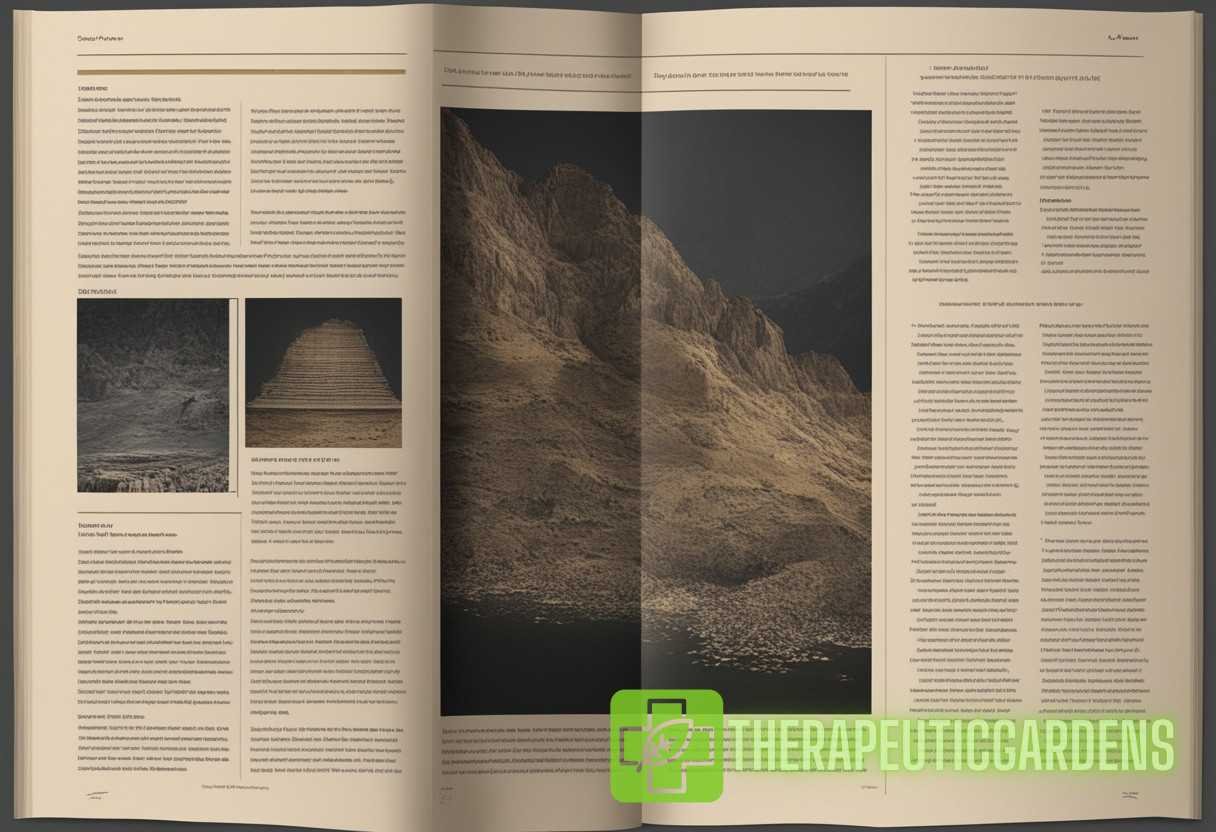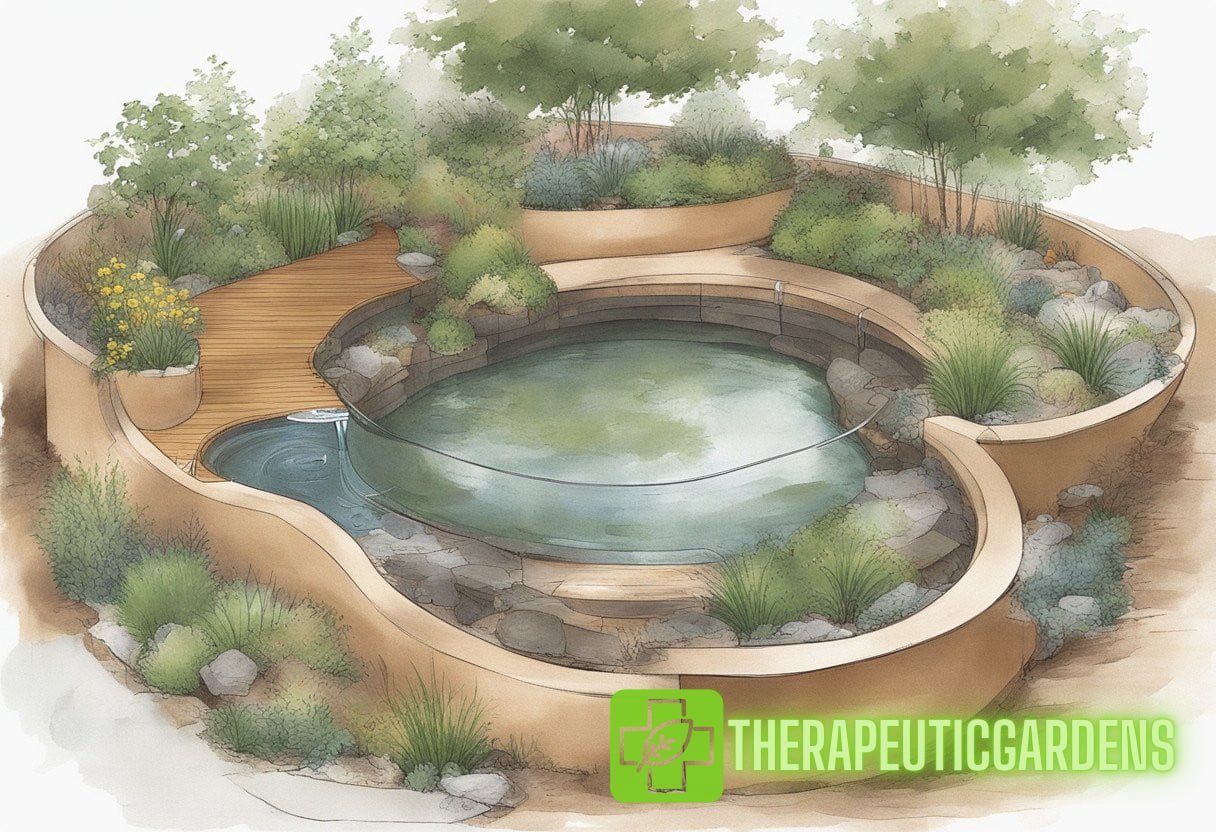Introduction to Sustainable Hydrology in Therapeutic Gardens
Our planet is increasingly aware of the critical need for sustainability in every aspect of life, including horticulture. As modern society grapples with water scarcity, integrating sustainable hydrology into therapeutic gardens remains vital. These gardens aren’t just aesthetically pleasing; they are essential spaces that provide numerous mental and physical health benefits. By incorporating sustainable hydrology practices, we ensure the longevity and health of these therapeutic spaces.
The Importance of Water in Therapeutic Gardens
Water plays a crucial role in the functioning of therapeutic gardens. It supports vegetation, enhances the sensory experience, and offers a soothing ambiance. However, with increasing threats from climate change and water shortages, it becomes imperative to adopt sustainable practices.
The goal of
The Fundamentals of Sustainable Hydrology
Sustainable hydrology can be understood through several key practices:
- Water Conservation: Implementation of methods to minimize water use and ensure water is used effectively.
- Water Recycling and Reuse: Utilizing greywater or rainwater collection systems for irrigation demands.
- Native and Drought-Resistant Plants: Using plants that require minimal water and thrive in local environments.
- Efficient Irrigation Systems: Drip irrigation and other precision systems reduce water waste.
- Soil Health Management: Improving soil’s water retention capacity through organic compost and mulching techniques.
Designing Sustainable Hydrology Systems for Therapeutic Gardens
Integrating sustainable hydrology into therapeutic gardens begins with a thoughtful design process. This involves evaluating local water conditions, selecting appropriate plant species, and implementing efficient infrastructure.
Assessing Water Needs and Conditions
Before implementing any design, it is crucial to assess the garden’s specific water requirements and local climatic conditions. Factors such as annual rainfall, humidity, and temperature influence water needs. Utilizing data from local meteorological stations can provide insight into these conditions.
Selection of Water-Efficient Plants
Selecting plants that are adapted to the local climate and that require minimal watering can significantly reduce water usage. Native plants are typically the best choice, as they have adapted over millennia to the local environment. Additionally, drought-resistant species can thrive with limited water.
Incorporating Rainwater Harvesting Systems
Rainwater harvesting systems collect and store rainwater for garden use. These systems range from simple rain barrels to more complex underground storage tanks. By utilizing rainwater, the demand for potable water is reduced, benefiting both the garden and the broader community.
Implementing Efficient Irrigation Systems
Irrigation is a critical component of maintaining therapeutic gardens, especially during dry spells. Efficient irrigation systems can significantly reduce water use while ensuring plants receive the necessary hydration.
Drip Irrigation Systems
Drip irrigation systems deliver water directly to the plant’s root zone, minimizing evaporation and runoff. They are among the most efficient irrigation methods and can be easily installed in both small and large gardens. Proper maintenance of these systems ensures long-term water conservation.
Smart Irrigation Controllers
Smart irrigation controllers use weather data and soil moisture sensors to optimize watering schedules. These systems prevent overwatering and ensure plants receive the right amount of water based on current conditions.
Mulching Techniques
Mulching helps to conserve soil moisture, reduce evaporation, and improve soil health. Organic mulches such as straw, leaves, and bark decompose over time, enriching the soil. Mulching around plants helps maintain consistent soil moisture levels.
Water Recycling and Greywater Systems
Recycling water within therapeutic gardens can significantly reduce overall water consumption. Greywater systems, which reuse water from sinks, showers, and washing machines, can be an effective solution.
Utilizing Greywater Systems
Greywater systems filter and distribute reusable household water to garden areas. These systems must comply with local regulations to ensure they are appropriately installed and safe to use. Properly treated greywater can support a variety of garden needs without compromising plant health.
Integrated Wetlands
Creating integrated wetlands within therapeutic gardens can facilitate water filtration and recycling. Wetlands can cleanse greywater through natural processes, providing a sustainable water source.

Linking to Hydroponics
Hydroponic gardening, which grows plants without soil using nutrient-rich water solutions, can also benefit from recycled water systems. To learn more about hydroponic gardening, consider exploring this detailed article on hydroponic gardening.
Enhancing Soil Health for Water Conservation
Healthy soil is crucial for efficient water use. Soil with good structure and organic content retains water better and supports plant health.
Improving Soil Structure
Integrating organic matter such as compost and manure improves soil structure, enhancing its water-holding capacity. Regularly testing soil helps determine nutrient needs and allows for targeted soil amendments.
Using Cover Crops
Cover crops, such as clover or rye, can protect soil from erosion and improve its structure. These crops add organic matter to the soil when they decompose, which increases water retention.
Implementing Soil Moisture Sensors
Soil moisture sensors provide real-time data on soil moisture levels. These sensors help conserve water by informing irrigation schedules, ensuring plants are only watered when necessary.
Case Studies and Real-World Applications
Let’s look at some real-world examples of therapeutic gardens that have successfully integrated sustainable hydrology practices. These case studies provide valuable insights and practical strategies for garden designers and enthusiasts.
The Bronx River House Garden
The Bronx River House Garden in New York exemplifies the successful integration of sustainable hydrology. The garden utilizes rainwater harvesting, drip irrigation, and native plants to create a sustainable oasis in an urban setting.
Chicago Botanic Garden
The Chicago Botanic Garden employs numerous water conservation techniques, including the use of green roofs, permeable pavements, and an extensive rainwater harvesting system. They have significantly reduced their dependence on municipal water supplies.
Seattle Japanese Garden
The Seattle Japanese Garden incorporates traditional water features with modern sustainable practices. The garden uses a constructed wetland system to recycle water and integrate natural filtration processes, creating a serene and sustainable space.
The Future of Sustainable Hydrology in Therapeutic Gardens
As climate change and water scarcity challenges grow, the need for sustainable hydrology in therapeutic gardens becomes even more pressing. Continued innovation and education in this field are necessary to promote widespread adoption of these practices.
Educational Resources and Training
Providing education and training on sustainable hydrology practices is essential for landscape designers, gardeners, and the general public. Workshops, online courses, and community programs can disseminate this knowledge.
Encouraging Community Involvement
Community involvement in garden projects can foster a collective responsibility for water conservation. Encouraging local participation through volunteer programs and educational events can help build a culture of sustainability.
Advancements in Technology
Technological advancements in water-saving devices, remote sensing, and data analytics will continue to play a significant role in the future of sustainable hydrology. Embracing these technologies can further enhance water conservation efforts in therapeutic gardens.
Sustainable Naming and Branding
Sustainable naming and branding can help reinforce the importance of water conservation and sustainable practices in gardening communities. Naming initiatives and garden projects with sustainability themes can inspire more environmentally conscious designs. For insights into sustainable naming, consider visiting
Integrating sustainable hydrology into therapeutic gardens is not just a necessity but a responsibility we owe to future generations. By adopting water-saving practices, utilizing efficient irrigation systems, and promoting community involvement, we can create resilient and sustainable therapeutic gardens for all to enjoy. Ultimately, the future of sustainable therapeutic gardens relies on continued innovation, education, and a collective commitment to preserving our planet’s precious water resources. Together, we can transform our gardens into havens of wellness and sustainability, ensuring that they thrive for years to come.Conclusion



